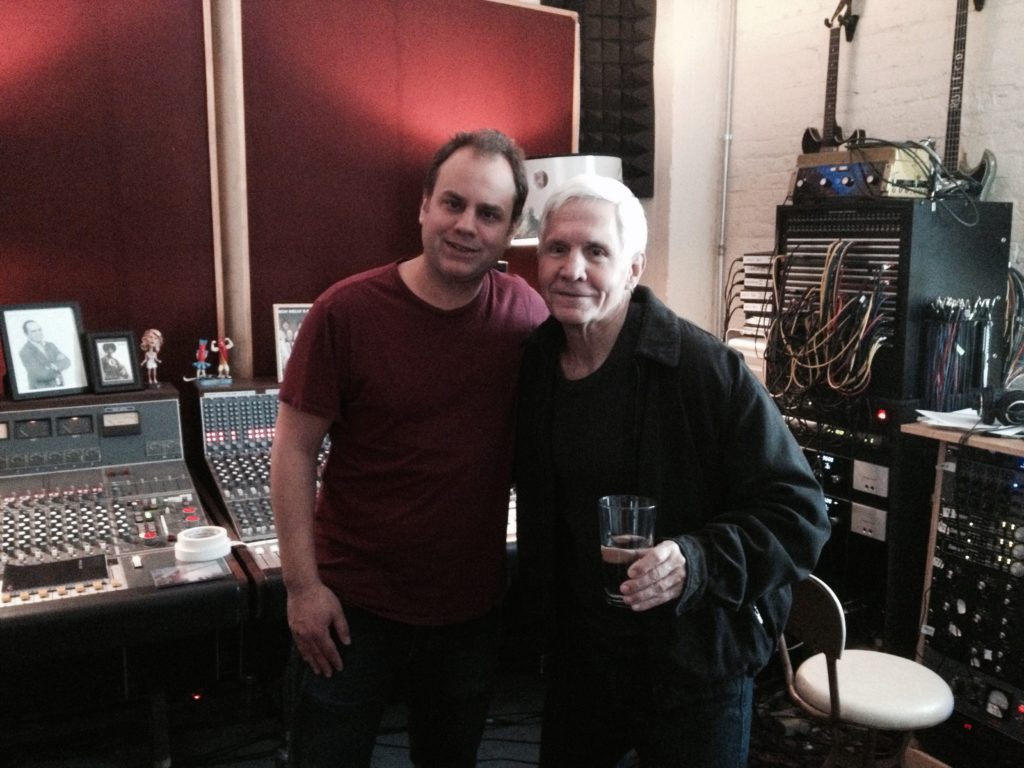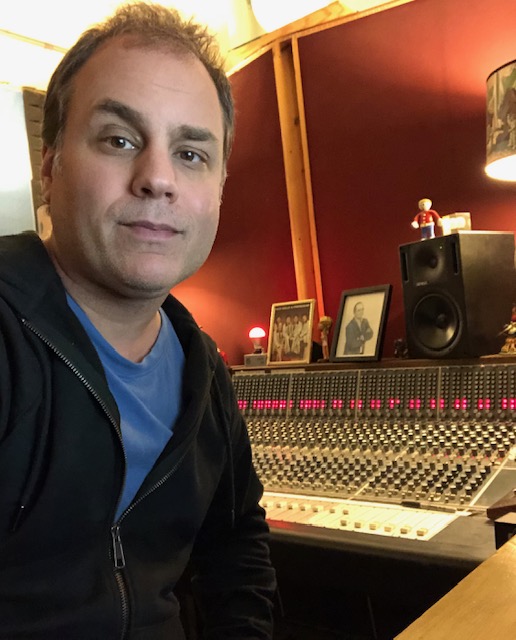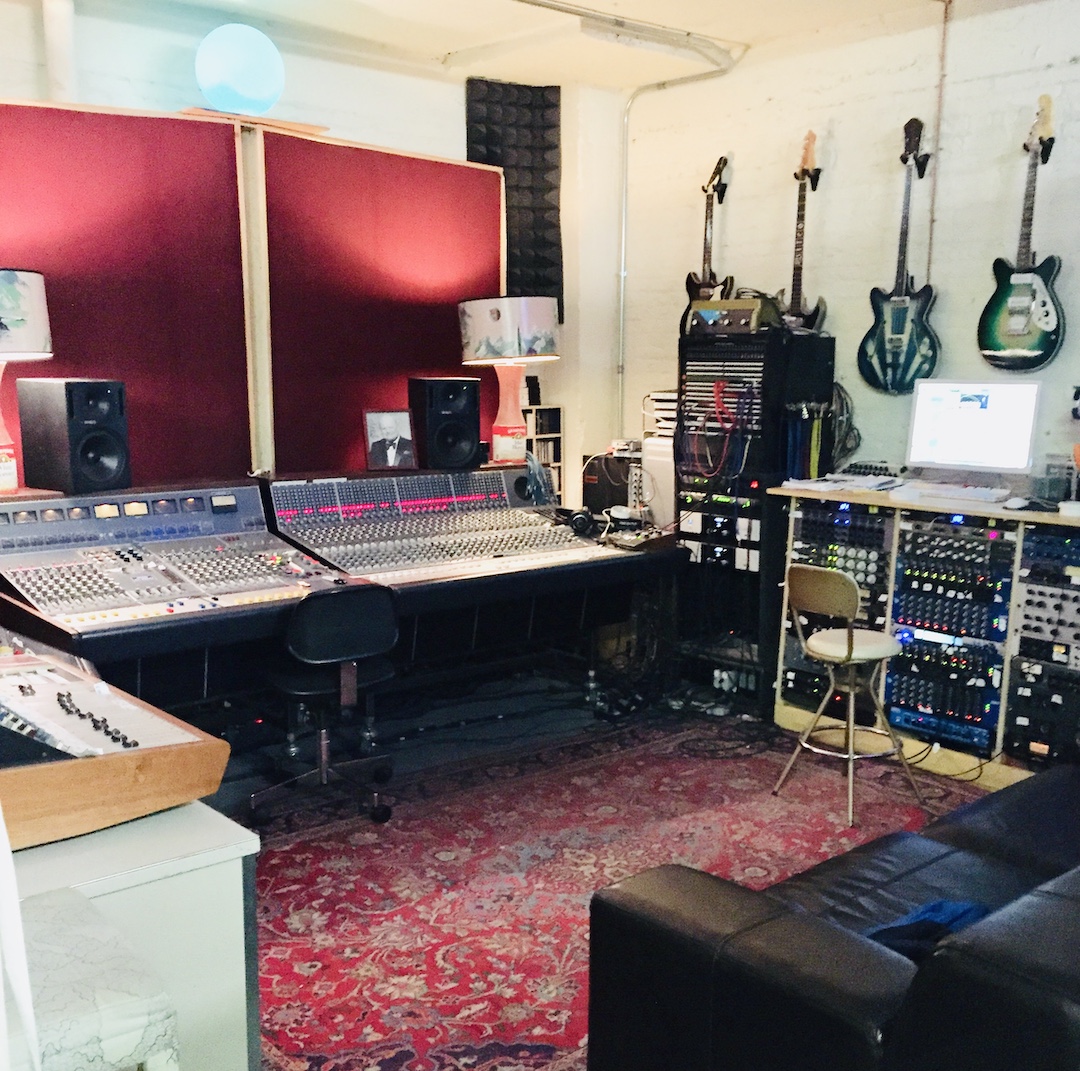From Walter Sear to Wilco with GRAMMY-Winning Producer/Engineer Tom Schick
GRAMMY-winning engineer, producer and Berklee grad Tom Schick could be called the consummate audio professional’s professional. Quietly working away on a steady stream of amazing music over the past 20-plus years, Schick has collaborated or made records for the likes of Paul McCartney, Bob Dylan, Ryan Adams, Mavis Staples, Norah Jones, Richard Thompson, Wilco and Jeff Tweedy, to name but a few.
After an apprenticeship with audio legend Walter Sear—followed by a lengthy stint working professionally in New York City—Tom came to call Chicago home, and has long assumed the enviable duties of house engineer for Wilco’s “The Loft” studio; an audio wonderland of rare instruments and limitless sonic experimentation.
I recently spoke with Tom about his musical journey, his work with such a diverse roster of artists and talked a little Wilco Loft studio porn for good measure.
I’m always curious to learn how people in our line of work get from Point A to Point B— How they started on the path to where they are today. Could you give us a little backstory on your musical journey?
I was always a big music fan. I got my first guitar when I was around 10 years old and played it all the time. By high school I became proficient enough to play in a rock band and would stumble through jazz standards in The Real Book that my first guitar teacher gave me.
I enjoyed playing guitar but found my true calling at 15 when my dad saw an advertisement for an audio engineering class at a local recording studio in the back of a local paper. After taking the class, I got an internship and have been working in studios ever since.
You apprenticed under the tutelage of the legendary Walter Sear of Sear Sound. What was that experience like for you?
It was great! After graduating from Berklee I got an internship at Sear which eventually turned into the job of head engineer. I learned so much from Walter that I’m not even sure how to put it into words. Not just about engineering but life itself.
His work ethic was incredible. He was almost always the first to arrive in the morning and the last to leave. There were so many mornings when, by the time I arrived, he had already vacuumed the studio and cleaned the bathrooms.
No job was ever too big or too small for any of the staff. He used to say that if the shopkeeper takes care of his shop, then the shop will take care of him.
Walter was always busy, even beyond music. At the time of his death he was working on an electrical tidal generator. I think a giant prototype is still in the basement at Sear. Aside from life skills, Walter taught me how to really be an audio engineer. And most importantly, he taught me how to listen.
At Sear, I learned how to use the right microphone for the right instrument and how to get the proper balance to tape with minimal EQ and compression. He was one of the last holdouts in NY for Pro Tools so I got really good at punching in and out on tape and editing with a razor blade. I also learned how to record bands in a live to 2-track situation which was a great skill to learn.
Walter and Roberta, the studio manager, were my family when I was in New York. I really miss Walter, but I’m glad Roberta is still keeping Sear Sound going the same as it was when Walter was around.
You’ve worked with a pretty amazing and diverse group of artists over the years. Do you find that kind of stylistic range a bit of a challenge, or is that a comfortable space for you to inhabit?
I love all kinds of music, so I feel lucky to get to work with a wide diversity of artists. It keeps things fresh. That was one of the best things about Sear Sound. One day would be Sonic Youth and the next would be Little Jimmy Scott. It really prepared me to work at The Loft in Chicago with Jeff Tweedy and Wilco. They cover a lot of creative ground and working on lots of different styles of music over the years has helped me to keep up with them.
Speaking of diversity, from the dry-ish intimacy of a record like Richard Julian’s Girls Need Attention to the more open, expansive sound of Ryan Adams’ Cold Roses, I love the egoless, sonic eclecticism of your work.
Unlike a lot of producers and engineers, it seems you’re not trying to put an overt, sonic stamp on any of your projects, allowing them to simply be what they need to be. Is that a conscious decision on your part or does that just happen organically for you?
Thanks for the compliment. It is a conscious decision. I feel like the most important part of my job is to help whoever I am working with capture their artistic vision without getting in their way.
Different songs call for different sonic treatments. I guess it goes with working on so many different types of music. I don’t like to be boxed in to any one particular sonic landscape.
Sometimes my job is like a photographer trying to capture the music in the most realistic way possible. Other times it can be a lot more abstract. I just try to be as open as possible and not overthink things. I like to be ready to record when the band is ready to play.
I also enjoy imperfections in both sound and performances. In the digital age, it’s so easy to make things perfect but that doesn’t always make the music better. The big picture is way more important than the little details to me.
Given your extensive work with Jeff Tweedy and Wilco, and now as the resident engineer at Wilco’s Loft studio, you guys obviously must have a great musical rapport. Can you tell us a little about how that relationship came to be?
Getting hooked up with Jeff and Wilco has been amazing. Not only is Jeff an incredible songwriter and musician, but he’s also the nicest person you could ever meet. His creativity and work ethic is inspiring to be around.
We first started working together in 2009. He needed an engineer at the last minute for a Mavis Staples record that he was producing at The Loft. The engineer that was supposed to do it had to cancel at the last minute and Jeff was in a bit of a bind. I jumped at the chance to work with the two Chicago legends. We had a lot of fun together.
Jeff had already worked on a lot of records at The Loft but You Are Not Alone was the first one that was both recorded and mixed there. It went on to win a GRAMMY and we’ve been working together ever since.
Are you working exclusively for Jeff and Wilco these days or are you still taking on outside projects?
Whenever Jeff is in town we are in the studio together, but I do other projects at The Loft when he is on tour. I’ve worked with Iron and Wine, Real Estate, Norah Jones, Peter Wolf and several other great artists since moving to Chicago.
This being SonicScoop after all, I couldn’t let you go without talking a little studio porn. Aside from the amazing collection of vintage and contemporary instruments living at The Loft, can you give us some details on the studio’s recording setup?
The Loft is an incredible studio to work in. Yes, the amount of instruments is staggering. It has everything a band needs to make a great record.
I keep a lot of mics plugged in so whenever somebody has an idea, I can be ready to record immediately. There is a 24-track Studer 827 which still gets used along with a Neve BCM-10 and Neve 32-input broadcast board from the late ’70s.
For mic pres, I mostly use the Neve BCM-10 along with 20 API 512cs that are in the outboard rack. Jeff usually uses a [Shure] Beta 58 or SM-7 and an 1176 for his vocals. If he’s tracking in the room with the band he’ll use the SM-7, but a lot of his vocals are done in the control room, without headphones, using a 58.
I have a Neumann 563 that I use on Jeff’s acoustic. I usually use a Chandler TG1 for some compression on the guitar. I mostly use a pair of Coles or a Royer on the drums along with a 57 on the snare and D112 on the kick. I have a dbx 160 VU on the kick and snare. Most of the drums go through API mic pres, while the guitars and vocals go through the Neve pres.
There is a Neumann U47 and U67 plugged into the Neve and used for a lot of overdubs. The electric guitars have either a 57, Royer, or AEA N22 going through a Manley Vari-Mu compressor. The bass cabinet has an RE-20 on it and an 1176 for some compression. There are also some 414s on the baby grand piano and a 57 on the upright piano. The Loft also has a great RCA 44 and 77 if we need them. I could go on but I think that’s almost everything.
Many thanks to Mr. Schick for his time and insight. For more info on Tom Schick, visit tomschick.com.
Mark Bacino is a singer-songwriter based in New York City. When not crafting his own melodic brand of retro-pop, Mark can be found producing fellow artists and composing for television/advertising via his Queens English Recording Co. or teaching songwriting as the founder-curator of intro.verse.chorus; a website dedicated to exploring the art of song craft. Visit Mark on Facebook, Instagram or follow him on Twitter.
Please note: When you buy products through links on this page, we may earn an affiliate commission.









